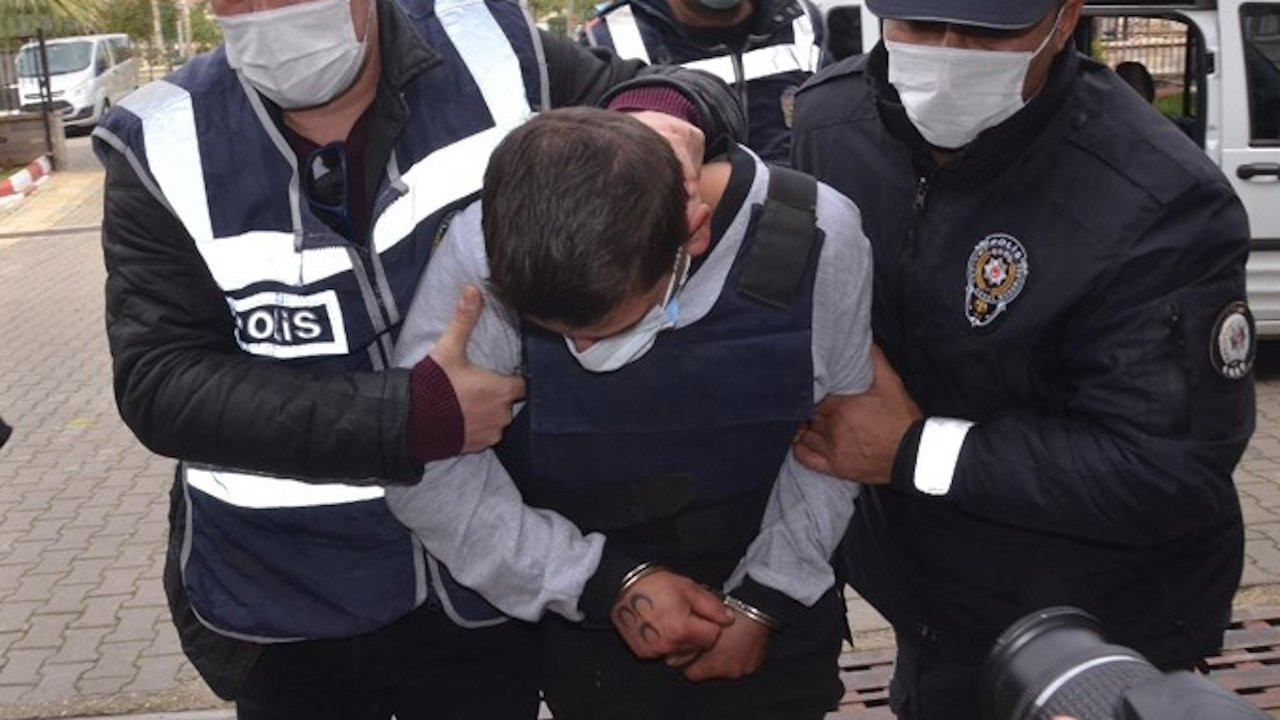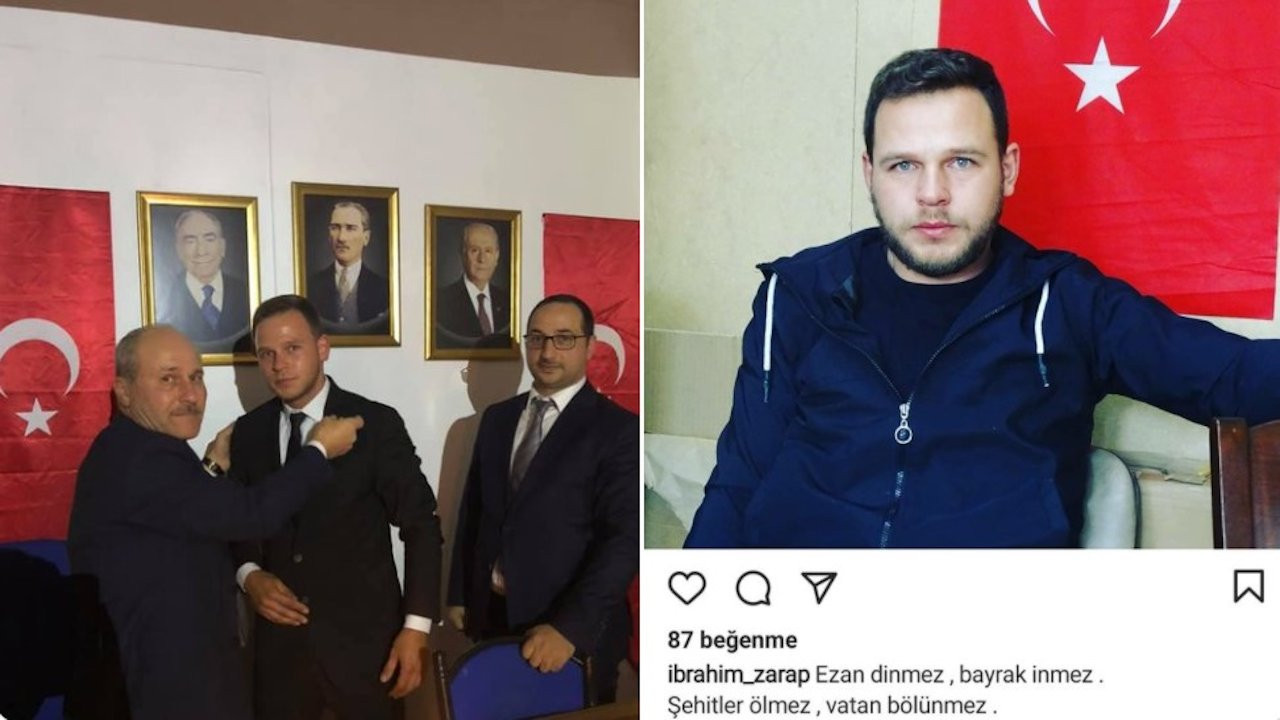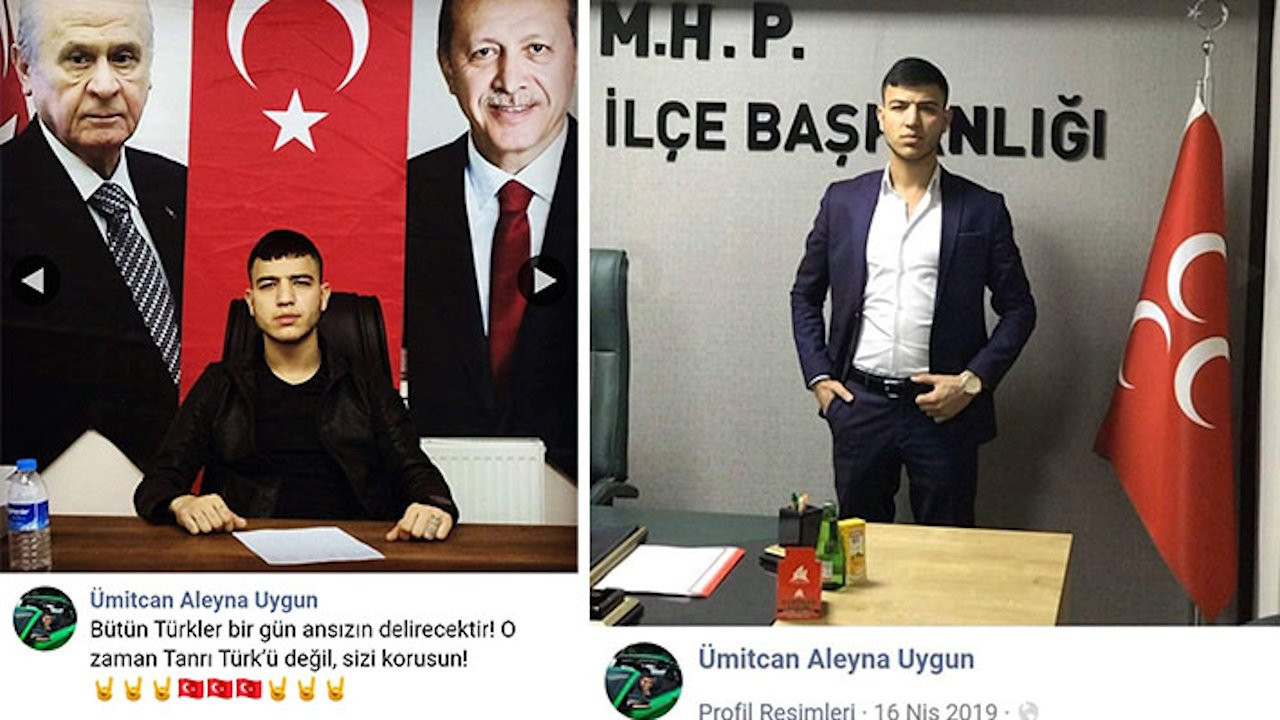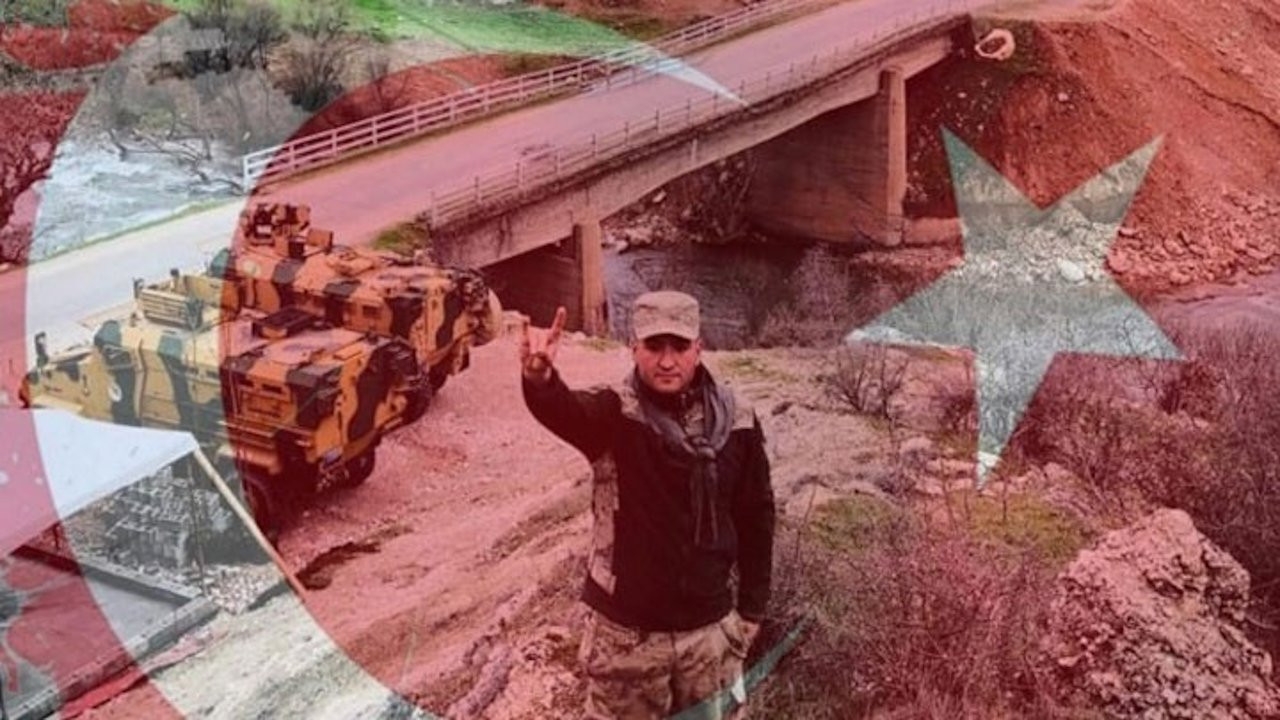How the Russian Left Survived in a Post-Soviet World
After the demise of the USSR on December 26, 1991, the Russian left had to find its place in a society transformed beyond recognition. In the face of huge challenges, its activists have led important struggles against the system established by Yeltsin and Putin.

Russian protestors in central Moscow carry portraits of lawyer Stanislav Markelov and journalist Anastasia Baburova, gunned down by neo-Nazis, and a placard that reads “fascists kill, the authorities cover it up,” on January 19, 2020.
The story of the modern left movement in Russia begins in the late 1980s, during the era of perestroika. From the very beginning it carried a contradictory combination of two political tendencies of the late Soviet period: popular (anti-market, statist) Stalinism and democratic socialism; nostalgic idealization of the USSR and criticism of it from the left. These political tendencies entered the public political arena in the late 1980s, and immediately found themselves on opposite sides of the battlefield dividing supporters and opponents of Mikhail Gorbachev’s perestroika.
The non-Stalinist left, originally part of the general democratic movement, created a number of independent organizations in 1989–1991, including the Confederation of Anarcho-Syndicalists, which became the first prominent and rather sizable anarchist group in the post-Soviet space, and the Committee for Workers’ Democracy and International Socialism, the first Trotskyist group. These and other antiauthoritarian left-wing groups, mainly arising among students, focused their efforts on establishing contacts with the growing labor movement and the newly emerging independent trade unions.
Boris Yeltsin’s victory in August 1991, the collapse of the Soviet Union, and the beginning of aggressive market reforms finally split the amorphous democratic movement: its rightward, liberal wing actively supported the new government, while the antiauthoritarian left moved into the ranks of the radical opposition. The very logic of events pushed this sector of the Left to participate in the emerging mass movement against market shock therapy, a movement dominated by Stalinists.
Popular Stalinism
Popular Stalinism, which opposed Gorbachev’s leadership, first publicly revealed its presence in early 1988, when an open letter titled “I Cannot Forsake My Principles” by Nina Andreyeva, an unknown teacher from Leningrad, appeared in the official Party newspaper Soviet Russia. This text expressed concern at the “denigration” of the Soviet past (and in particular the role of Stalin) and at the reinforcement of bourgeois “cosmopolitan” political tendencies diluting a class approach. While criticizing Gorbachev’s party leadership in a veiled form, Andreyeva directed her fire at a number of Soviet cultural figures, whom she accused of “left-liberal socialism” and “Trotskyism.”
Anti-Western chauvinism, admiration for Stalin, and a class approach directed against cosmopolitans and traitors within the elite, as outlined in Andreyeva’s text, together formed the underlying sentiment of the members of a number of organizations created in 1990–91. They all sharply opposed Gorbachev’s course, which involved elements of democratization and the introduction of market elements. These organizations first existed as platforms within the Soviet Communist Party, but after its disbandment in August 1991, they created independent parties, such as the Russian Communist Workers’ Party (RKRP) and the All-Russian Communist Party of the Bolsheviks (VKPB, which elected Nina Andreyeva as its leader).Against the background of the rapid impoverishment of the majority, social degradation, and an incredible increase in crime, the rhetoric of ‘popular Stalinism’ was able to become the basis for a broad opposition movement.
These parties rapidly gained in strength, uniting former rank-and-file members of the Soviet Communist Party, disoriented after its ban. This was especially true of the RKRP and the broad association Working Russia set up under its aegis, which by the end of 1991 numbered tens of thousands of active members throughout the country. If the RKRP was a centralized party, then Working Russia, headed by the talented orator Viktor Anpilov, was conceived as a mass organization focused on street actions against the social and economic policies of the Yeltsin government.
The rhetoric of Working Russia, which gathered up to two hundred thousand people for its rallies in Moscow in the early 1990s, fully inherited the traditions of popular Stalinism, with its declarations that the USSR had been destroyed by traitors and agents of the West, who, through control over the media, imposed false values and, in accordance with secret CIA plans, was carrying out a genocide of the Soviet people via the introduction of the free market. Against the background of the rapid impoverishment of the majority, social degradation, and an incredible increase in crime, this rhetoric, combining criticism of “wild capitalism” and the longing for a strong state, was able to become the basis for a broad opposition movement.
Confronting Yeltsin
On November 7, 1991, for the first time in seventy years, the anniversary of the October Revolution was not officially celebrated. The Soviet Union was living out the final weeks of its official existence and Yeltsin’s government was making serious plans to announce the judicial condemnation of communism as a criminal totalitarian ideology. On this day, the antiauthoritarian left — principally Trotskyists and anarcho-communists — and Stalinists led by Anpilov separately brought their supporters onto the streets. The two demonstrations spontaneously merged, and a joint rally was eventually held.
In the new political situation, the identity of the anti-government opposition was defined by the Stalinists, while the antiauthoritarian socialists were a minority within it, criticizing its chauvinism and adoption of conspiracy theories. Conversely, another minority in this opposition was comprised of Russian nationalists, who actively disseminated antisemitic and racist propaganda at the rallies of Working Russia. The culmination of this strange, contradictory form of united opposition (which pro-government liberals termed “red-brown”) was an open-armed confrontation in Moscow in the autumn of 1993.
The conflict between President Yeltsin and the Supreme Soviet, which was dominated by leftist and nationalist opponents of radical market reforms, led to a constitutional crisis in which the executive and legislative branches blocked each other’s decisions. On September 21, Yeltsin decided to cut this Gordian knot by dissolving the legislature and announcing the implementation of constitutional reforms. In response, the Supreme Soviet impeached Yeltsin and declared itself to be the sole legitimate authority in the country.
On October 3–4, a brief civil war broke out on the streets of Moscow between the riot police and army, which remained loyal to Yeltsin, and supporters of the Supreme Soviet. It would lead to the deaths of more than two hundred people. On October 4, after the opposition’s street protests were suppressed, Yeltsin ordered tanks to storm the White House, Russia’s house of government, where the rebellious parliament was in session.
The Stalinists of Working Russia, along with the nationalists, formed the fighting core of support for the Supreme Soviet, while the position of the antiauthoritarian left was less clear-cut. Some, such as the Trotskyists of the Committee for Workers’ Democracy and International Socialism, or Boris Kagarlitsky, the independent socialist deputy of the Moscow Soviet, unequivocally opposed Yeltsin, viewing him as a potential dictator defending the interests of the new bourgeois elite. At the same time, some anarchists and socialists decided to take a third position, equally critical of both sides of the conflict, and created a medical brigade that provided first aid to the wounded.
Managed Democracy
Yeltsin’s victory and the subsequent adoption of the new Russian Constitution in December 1993 created a political system founded upon a disequilibrium between near unlimited presidential power and a weak parliament (the State Duma). In accordance with this document, the president, regardless of the results of the parliamentary elections, had the power to appoint the government, and could dissolve the Duma if it rejected the prime minister’s candidacy three times. Moreover, the Duma could be disbanded by the president within seven days in the case of a no-confidence vote in the current government.
The Russian parliament became the most disenfranchised and subordinate body of state power, with even its building and budget now managed by the presidential administration. In this system, known as managed democracy, a limited set of opposition parties could collect the votes of disgruntled citizens in elections and voice their discontent from a parliamentary platform, but they had no real opportunity to influence political decision-making.
In order to replace the aggressive street opposition represented by groups such as Working Russia with a moderate electoral party ready to play by the new rules, the authorities gave the previously banned Communist Party the opportunity to restore their party organization. In the first Duma elections in late 1993, the Communist Party of the Russian Federation (CPRF) won 44 seats, and 157 in the following elections in 1995, becoming the largest parliamentary faction.
The result of the events of 1993 was the marginalization of the Stalinist parties and the mass exodus of their members and supporters to the CPRF. Ideologically, on the one hand, the party represented a moderate version of the popular Stalinism described above; on the other, it finally consolidated its fusion with Orthodox imperial nationalism. This partly reflected the characteristics of the party’s activist and electoral base, which brought together impoverished pensioners, the mass intelligentsia (doctors, teachers, scientific researchers) who lost out as a result of market reforms, lumpenized workers of former Soviet enterprises, the nostalgic middle ranks of the bureaucracy, a sector of the managerial class, and army officers.
In CPRF rhetoric, protests against privatization and poverty acquired a paternalistic tone, arguing for the need to return to a strong social state based on a patriarchal morality and national traditions. In his writings, the “perpetual” party leader, Gennady Zyuganov, justified the need for socialism as a product of a particular Russian civilization, while his political opportunism could always be presented as a manifestation of a “statist mindset.”
At the same time, the CPRF remained Russia’s largest mass party: by the end of the 1990s, its membership reached half a million, and almost half of the country’s regions were governed by democratically elected “red governors.” Regular street rallies organized by the party attracted tens of thousands, and created an opportunity for agitation, including for the antiauthoritarian left.
Two Wars
The relative stabilization of the Russian political system in the second half of the 1990s was accompanied by an increase in social conflicts associated with the sweeping privatization of former Soviet enterprises. Massive job cuts and months of wage delays led to protests in which the Left played an important coordinating and organizing role (primarily through the radical Defence of Labour trade union, which was actively developed by both antiauthoritarian socialists and Stalinists from the Russian Communist Workers’ Party).The Communist Party remained Russia’s largest mass party: by the end of the 1990s, its membership reached half a million, and almost half of the country’s regions were governed by democratically elected ‘red governors.’
One of the most striking episodes of this struggle were the strikes that led to occupations in Vyborg (near the border with Finland) and Yasnogorsk (in the Tula region of central Russia), where workers tried to manage their enterprises independently, through trade unions and workers’ councils. In May 1998, a nationwide Russian miners’ strike, also known as the rail war, began. Driven to desperation by chronic wage delays, workers blocked key railways and highways in the main coal-mining regions of Western Siberia (Kuzbass) and the Northern Urals (the Komi Republic). The miners were soon joined by workers from other enterprises, and in the center of Moscow, near its White House, a protest camp of tents was set up, organized by the Independent Union of Miners.
Almost all left-wing groups took an active part in the events, engaged not only in disseminating propaganda but also in coordinating protests in different regions of the country. Despite the fact that a significant part of the salary debts were repaid, the rail war was one of the reasons for the fall of Sergei Kiriyenko’s liberal government. In September 1998, representatives of the CPRF entered the new cabinet of Yevgeny Primakov for the first and only time in the history of post-Soviet Russia.
If both the antiauthoritarian left and the Stalinists participated in the labor movement, then they clearly diverged in their attitudes to Russian military operations in Chechnya. While supporters of the CPRF and more radical Stalinist groups still associated the leadership of Yeltsin with the First Chechen War (1994–96), which they held against him, for the Second Chechen War, which began in 1999 under the slogan of restoring state unity, they, to some extent, formed part of the general patriotic consensus.
By contrast, the Left that had inherited the anti-Stalinist internationalist tradition actively resisted the rising wave of chauvinism and anti-Caucasian racism, and many of them openly defended the demand for Chechnya’s full national self-determination. This position brought the Left closer to some liberals and human rights organizations (such as Memorial), with whom they regularly held anti-war rallies in Moscow and St Petersburg in the late 1990s and early 2000s.
From Yeltsin to Putin
On December 31, 1999, the last day of the twentieth century, post-Soviet Russia entered a new political reality: in his New Year’s address, President Yeltsin announced his resignation and publicly proclaimed his successor, Vladimir Putin, who, at that time, was heading the government as prime minister. The rapid rise in the new president’s popularity was largely due to a hegemonic model that had been absent in the previous period.
The Putin majority was an alliance, on the one hand, of big business, which wanted firm guarantees for property acquired in the 1990s and continued market reforms, and which sought the return of a strong centralized government by the bureaucracy and the army, and, on the other, of millions of employees who were tired of constant salary delays and social instability. The formation of a new social stratification in Russian society took place against the background of the unhealed trauma of shock therapy and the mass deindustrialization of the 1990s, when almost half of the traditional Soviet working class lost their jobs and, accordingly, their former class identity.
The Putin majority was an alliance of big business, which wanted firm guarantees for property acquired in the 1990s and continued market reforms, and millions of employees who were tired of constant salary delays and social instability.
Ideologically, this coalition was shaped by a surprising combination of Soviet nostalgia on a symbolic level (in sharp contrast to the systematic anti-communism of the Yeltsin period) and a neoliberal course aimed at finally overcoming the Soviet legacy in the economy and social sphere. So, while the Soviet national anthem was brought back with new lyrics in 2000, a new Russian labor code was adopted between 2001 and 2004, sharply reducing employees’ rights, alongside a new land code which turned land into a fully commodified object of purchase and sale, and a housing code allowing the privatization of the urban economy.
Finally, in 2004, the government launched a massive attack on the system of social benefits (primarily free transportation and reduced housing costs) enjoyed by millions of residents, from students to pensioners. This reform, the so-called monetization of social benefits (i.e., their replacement with small cash payments) faced massive resistance: in January 2005, a wave of rallies swept across the country, and near Moscow, protesters blocked the key highway to St Petersburg.
Despite the fact that, just a few weeks later, the government made concessions, retaining most of the benefits, the radical left, which actively participated in the campaign against monetization, was able to consolidate its success and hold the first Russian Social Forum in Moscow in April 2005, attended by hundreds of representatives of the Russian regions.
Left Renewal
The new social and political situation of the early 2000s became a challenge for the Russian left, which needed to be met with a programmatic and organizational renewal. If the mass opposition movement of the 1990s, dominated by Stalinists, was mainly rearguard in nature and directed against capitalist restoration, now the Left had to create structures pertinent to the Putin era and its “normalization” of post-Soviet capitalism.
In 2002–3 an attempt was made to create a Russian Labor Party as the political representation of independent trade unions with a socialist class program. Both the left-leaning Defence of Labour trade union and the Trotskyist group Socialist Resistance, as well as the previously apolitical air traffic controllers’ and dockers’ unions, took part in this initiative. Despite an energetic founding congress, which gathered hundreds of activists, the new party was short-lived: after a series of splits, the Labour Party had already ceased to exist by 2004.
A number of participants in this project continued to try to create a broad left party, however, largely inspired by the experience of the West European left. This task was causally related to the “de-provincialization” of the Russian left and social movements, and particularly their integration into the protests against capitalist globalization, which hit the headlines in the first half of the 2000s.
In the summer of 2001, a bus carrying dozens of representatives of left-wing groups (mainly Trotskyists and anarchists), trade unions, and social movements from different regions of the country went to Genoa, where large-scale demonstrations against the G8 were to take place. Their active participation in the Genoese events played a major role in further expanding international contacts and overcoming the political isolation of the Russian left movement. Over the next decade, Russian delegations participated in all the significant international anti-globalist protests, as well as European social forums.
A key factor in the changes in the Russian left movement was the emergence of a new generation of activists whose world outlook and political culture were already shaped by post-Soviet realities. These changes affected both the tradition of the antiauthoritarian left and the Stalinists.The new social and political situation of the early 2000s became a challenge for the Russian left, which needed to be met with a programmatic and organizational renewal.
An important role in the social and political protests of the 2000s was played by the Vanguard of the Red Youth, led by the charismatic Sergei Udaltsov — the youth wing of Working Russia, which soon broke with its older comrades and subsequently transformed itself into the Left Front. The old Confederation of Anarcho-Syndicalists finally ceased to exist by the end of the 1990s, and a new generation of anarchists created Autonomous Action, a dynamic organization closely associated with youth subcultures, which had a decisive influence on the emergence of a substantial street Antifa movement.
By the mid-2000s, there were already three large Trotskyist groups in Russia that differed markedly from each other in strategy: the Revolutionary Workers’ Party (RRP), Socialist Resistance, and the Socialist Forward Movement. While the RRP was focused on entryism into the CPRF, which they viewed as a “traditional workers’ party,” the Forward activists considered their main task to be politicizing independent trade unions and creating a broad left structure for the future, similar to the French New Anti-Capitalist Party.
Recovery, Resistance, Revival
Russia’s economic recovery in the first half of the 2000s, primarily related to oil prices, was accompanied by an increase in income and an expanding flow of foreign investment. On the ruins of the former Soviet enterprises, new production facilities were created, focused on the Russian market and concerning, above all, the food and automotive industries. It was at these enterprises, owned by multinational corporations, that a new trade union movement arose during the later 2000s.
At the end of 2007, a demand for higher wages at a Ford plant near St Petersburg led to a four-week strike, which ended in a total victory for the union. This story received a huge response at the national level and inspired the workers of other enterprises owned by large corporations to form independent trade unions. This process, in which representatives of various left-wing groups played a major role, slowed down only after 2009, due to the consequences of the global economic crisis.
An important trend for the development of the Russian left movement during this period was its active engagement in the academic and cultural spheres. Since the early 2000s, such classic Marxist works as Georg Lukács’s History and Class Consciousness and Louis Althusser’s For Marx have been translated into Russian for the first time, as well as many texts by more recent authors, such as Jacques Rancière, Immanuel Wallerstein, Antonio Negri or Slavoj Žižek.
This work was carried out both by purely academic publishers and by left-wing activists themselves: for example, the Free Marxist Publishing House, which was set up by members of the socialist movement Forward. There has also been a growing interest in left-wing ideas in the Russian contemporary art sphere since the mid-2000s, with the St Petersburg art group Chto Delat? (What Is to Be Done?) and Moscow Art Magazine playing a key role.
Yet in parallel with this renewal of left-wing politics, the early 2000s was a time of spectacular growth for the Russian far right. If, in the 1990s, the rare monarchist, clerical, and Nazi organizations somehow managed to join forces with the united left-right opposition to the Yeltsin government, then in the following decade an independent ultraright youth scene of skinheads and football hooligans emerged, focused on street violence against national minorities (primarily diasporas from the Caucasus and labor migrants from the former Soviet republics of Central Asia).
A key factor in the changes in the Russian left movement was the emergence of a new generation of activists whose world outlook and political culture were already shaped by post-Soviet realities.
Since the mid-2000s, the streets of Russian cities have witnessed waves of racially motivated violence involving hundreds of victims. In response to the violence of the ultraright, the youth Antifa movement emerged, originally led by the activists of the anarchist Autonomous Action group, and to a lesser extent other left-wing groups (both Trotskyists and the Stalinist Vanguard of the Red Youth).
By the end of the 2000s, a real street war had begun between the ultraright and Antifa, culminating on January 19, 2009, in the political murder of Stanislav Markelov, a well-known left-wing lawyer and principled defender of victims of racial hatred, and Anastasia Baburova, an activist for Autonomous Action. A year later to the day, when far-right involvement in these murders was proved, about two thousand people took part in anti-fascist demonstration in Moscow under the slogan “To remember is to fight.” From that moment on, January 19 has been a traditional day of mobilization for the Left, in which representatives of almost all existing organizations and left political tendencies take part.
Containing Communism
Meanwhile, the social and political changes of the 2000s had a strong impact on the position of the CPRF. On the one hand, Zyuganov’s communists firmly maintained their place in the system of managed democracy and regularly came second in any election, after Putin’s United Russia. On the other, they lost their activist base, turning from a mass party into an electoral one.
But while the supporters of the CPRF of the 1990s were aging or had become loyal Putinists, new activists joined the party, especially its youth organization, the Union of Communist Youth (UCY), which was focused on the search for new ideas and cooperation with the more radical left. As a result, the Youth Left Front was created in 2004; it was a coalition of left-wing groups, including the UCY, the Vanguard of Red Youth, and the Trotskyist Socialist Resistance.
Soon this initiative was perceived as a threat by the leadership of the CPRF, and a number of its active participants were expelled from the UCY. In an effort to keep the party within the framework of an electoral policy based on tacit agreements with the Kremlin, the CPRF leadership declared, in the summer of 2007, a “Trotskyist threat” to its organization, and launched a full-scale party purge.
As a result of this campaign, dozens of key activists were expelled from the CPRF, including leaders of party organizations in Moscow and St Petersburg (who were not Trotskyists at all, but only advocated that the party should become more active in extra-parliamentary politics). Nevertheless, the CPRF has continued to experience internal antagonisms between, on the one hand, its leadership and the parliamentary faction built into the system of managed democracy, and, on the other, local party leaders associated with social protest movements and disposed to a more radical line.
On September 24, 2011, at the congress of the ruling United Russia party, then president Dmitry Medvedev proposed the nomination of Vladimir Putin for the presidential elections in March of the following year. Despite the fact that many had predicted this turn of events, Putin’s decision to secure a third presidential term appeared to openly challenge the system of managed democracy. His return meant that the future of this political system was now causally connected to his person, and the logic of this decision inevitably led to two more consecutive presidential terms.
Ground zero for a new political era in post-Soviet Russia was December 2011. On this day, after the announcement of the election results to the State Duma, thousands of people came to the center of Moscow to protest the massive fraud, which ensured the unconditional victory of the immoveable ruling United Russia party. A few days later, on December 10, about one hundred thousand people took part in a rally demanding fair elections in Moscow; at the time, it was the largest street action since the politically turbulent early 1990s.The mass mobilizations of 2011 caught almost all the existing extra-parliamentary political forces by surprise.
Over the following month, demonstrations involving thousands were repeated in Moscow, St Petersburg, and other major cities. The politicization that rapidly engulfed broad sections of the Russian middle class was of a rather mixed nature: it included a political protest against the country’s move toward a pure form of authoritarianism as well as disgruntlement with the consequences of the economic stagnation that had settled over Russia after the global financial crisis of 2008.
The mass mobilizations of 2011 caught almost all the existing extra-parliamentary political forces by surprise: the opposition liberals as well as the far right and the far left. The lack of clear political hegemony in the emerging street movement allowed all these forces to participate and fight for influence. Thus, Sergei Udaltsov, leader of the Left Front, managed in a short time to become one of the most recognizable public representatives of the protest, along with the liberals Boris Nemtsov and Alexei Navalny or the nationalist Alexander Belov.
The Left Front had been created in 2008 on the basis of the Stalinist Vanguard of Red Youth and a number of figures hailing from the Russian CPRF and the nonauthoritarian left. It played a prominent role in the protest wave of 2011–12 alongside other radical left groups, such as the Russian Socialist Movement (created in early 2011 by combining the socialist movement Forward and a number of other Trotskyist groups) and the anarchist Autonomous Action. Together, these groups formed united contingents of the radical left at demonstrations and ensured that their representatives would gain a place on the rostra at public rallies.
At the same time, the Left tried to present a programmatic and strategic alternative to the liberals, who mainly saw the movement’s goal as a “split in the elite” capable of returning the country to a representative democracy. Representatives of the Left Front and the Russian Socialist Movement insisted that the movement should expand its base beyond the middle class of Moscow and the large cities, combining democratic demands with a program of social and economic change.
Backlash
Clearly, from the authorities’ perspective, the prospect of a broadening protest movement was a major threat. In response, Putin’s electoral platform placed a special emphasis on significantly increasing public-sector salaries and pensions, which should not be less than the average salary in the country. The rhetoric of Putin’s campaign simultaneously bore the features of social populism and reactionary conservatism: for example, the protesters were denounced as a Western “fifth column” wishing to destroy Russia and were characterized as a sanctimonious minority, in opposition to the silent majority which stood for stability and the preservation of traditional Russian values.
The famous Pussy Riot performance at the Moscow Cathedral of Christ the Saviour, which was originally feminist and antiauthoritarian in nature, was portrayed by state propaganda as ideological sabotage directed against Orthodoxy and national tradition. The arrest of the members of Pussy Riot, as well as the onset of a homophobic campaign in the state media, contributed to the interpretation of the protest movement in terms of culture wars, with the protesting minority doomed to defeat.
On May 6, 2012, an opposition demonstration was scheduled in Moscow to protest against Putin’s presidential inauguration. A preplanned provocation led to mass clashes between protesters and the police. The criminal cases initiated as a result of this action became a powerful tool for suppressing further protests: during 2012–13, dozens of people were arrested on charges of violence against the police and of organizing mass riots, a significant section of whom were representatives of left-wing groups. Sergei Udaltsov and Leonid Razvozzhayev, representatives of the Left Front, and Alexey Gaskarov, one of the main public representatives of Autonomous Action and Antifa, were subsequently sentenced to several years in prison.
During 2012–13, dozens of people were arrested on charges of violence against the police and of organizing mass riots, a significant section of whom were representatives of left-wing groups.
The events in Ukraine in 2014 contributed to the further consolidation of the regime and the reinforcement of repressive measures. The victory of the Maidan was presented by state propaganda both as a result of the revolutionary technologies of the West and as a nationalist movement hostile to Russia and the Russians. The reincorporation of Crimea and the subsequent war in eastern Ukraine, in which regular Russian troops were covertly operating, led to the rise of anti-Ukrainian chauvinism and the popularity of Putin as a national leader who could effectively resist NATO pressure.
These events have divided a Russian left already weakened by repression. The CPRF, Left Front, and other Stalinists saw the secessionist movement in Donetsk as a precedent for a workers’ revolt against the reactionary Kiev regime, with Russia’s intervention perceived as a fair confrontation with Western imperialism.
The results of 2014 and the so-called Russian Spring — the schism in the opposition, the patriotic rallying around Putin, and the official criminalization of almost any social protest as an attempt to “organize a Maidan” — led to a prolonged decline in political activity and the atrophying of most left-wing groups. By 2017, however, the situation began to change: the ongoing economic downturn, political disenfranchisement, rising poverty, and the glaring social inequality of Putin’s Russia had led to the rise of discontent and the politicization of a new generation.
These political trends were best expressed by Alexei Navalny, the liberal activist and video blogger who specialized in exposing the corruption and illicit enrichment of the Russian elite. In March 2017, his call to take to the streets and speak out against the corruption of Prime Minister Dmitry Medvedev was supported by thousands of people across the country, including a significant number of schoolchildren and students.
Navalny’s rhetoric was markedly different from the style of the old-sсhool Russian liberals: he exposed not only officials but also billionaires who whisked money out of the country to offshore companies, and he emphasized the jarring discordance between their luxury and the poverty of the Russian provinces: by the end of the 2010s, about 20 million Russian residents were officially in poverty — that is, their monthly income was less than the minimum subsistence level (€200).
The Anti-Corruption Foundation headed by Navalny differed from traditional voices in other ways too: it was more like a vertically organized commercial campaign with a team mentality than a political organization open to public discussion of its decisions and interaction with other political forces. While criticizing Navalny as a pro-market populist with no clear agenda, many radical leftists nevertheless actively participated in the protests he instigated, and were able to find new supporters in the wake of the ongoing politicization of young people. By 2017, the ongoing economic downturn, political disenfranchisement, rising poverty, and the glaring social inequality of Putin’s Russia had led to the rise of discontent and the politicization of a new generation.
In March 2018, Putin was reelected for another presidential term. These elections were held in full conformity with the canon of managed democracy: Putin won an absolute majority in the first round, while his most formidable opponents (above all, Alexei Navalny) were not allowed to participate. Two months later, the government announced plans to raise the retirement age significantly, directly threatening the well-being and life prospects of a large part of the notional Putin majority.
Across the country, protests began against the unpopular reform, and were joined by both the CPRF and Navalny’s supporters, as well as the People Against campaign, formed by independent trade unions and part of the radical left (in particular, the Russian Socialist Movement). It was not possible to form a unified protest coalition, however: the CPRF, Navalny’s organization and the People Against campaign could not agree on joint actions.
Smart Voting
Partly because of this unfortunate experience, and with one eye on the government’s collapsing popularity ratings, in 2019, Navalny announced his “smart voting” strategy: a mechanism to encourage all opposition-minded voters to support whichever candidate has the greatest chance of winning against the ruling United Russia representative. This strategy not only posed a serious threat to the dominance of the party in power but also contributed to a rapprochement with the Left, since in most cases the second candidate was from the CPRF.
In the summer of 2019, in the elections for the Moscow city parliament (Moscow Duma), thanks to smart voting, the CPRF was able to get its best electoral result in the capital in its entire history. The new Communist deputies elected through the consolidation of the protest vote tended to represent the more radical wing within the party, and their appearance on the public stage changed the balance of power within the CPRF itself.
The erosion of the Putin majority, already evident after the pension reform, became even more pronounced in 2020, when the Russian government provided little support to the population during the COVID-19 pandemic. The sense of outrage after the arrest of Alexei Navalny in January 2021, which provoked mass protests in dozens of Russian cities, became an occasion for expressing accumulated social discontent. The strategy of most left-wing activist groups — the Russian Socialist Movement, Socialist Alternative, the Revolutionary Workers’ Party, and others — was to participate in these protests with their own slogans and program.
The reinforcement of authoritarian trends and the sharp restriction of any form of public politics in the second half of the 2010s was partially offset by the development of quasi-political forms of left-wing activity that attracted the interest of young people. Various video blogs that debate historical or cultural issues became hugely popular, with the most successful, oddly enough, being those of the Stalinists, whose videos defending the achievements of the Soviet Union have reached millions of viewers.
Stalinist video bloggers, while coinciding with official propaganda that viewed Putin’s Russia as the successor to the USSR, also emphasized the discontinuities, contrasting the mythologized lost harmony of Soviet society with a contemporary sense of decline. Thus, the popular Stalinism of the twenty-first century has gathered influence as an internet discourse unrelated to activist politics.
The erosion of the Putin majority became even more pronounced in 2020, when the Russian government provided little support to the population during the COVID-19 pandemic.
Another important phenomenon of the past five years has been the new generation’s significant interest in a feminist agenda. Despite the earlier endorsement of a feminist agenda in the 1990s and 2000s by antiauthoritarian leftists, anarchists, and Trotskyists, it was only in the 2010s that political feminism in Russia made a quantum leap, capturing the attention of wide swathes of young people.
This was reflected not only in popular video blogs and the appearance of a significant number of translations of English-language literature on feminist theory but also in activist initiatives against domestic violence and harassment in universities or for the use of feminine gender-specific terms in Russian. An important difference between this new wave of Russian feminism is its connection with left-wing anti-capitalist criticism, which manifests itself both at a programmatic level and in practical interaction with left-wing groups.
The Russian left is entering the 2020s with new political challenges due to the regime’s increasingly authoritarian drift and the growth of social contradictions, but still with the same old problem of its rather opaque relationship with the historical baggage of Russian Marxism and the complex Soviet past. The need for such historical continuity is directly connected with the contours of the project for a better, socialist future, which is so necessary for a post-Soviet Russia teetering on the brink of a deep crisis.
This is an extract from Dissidents among Dissidents: Ideology, Politics and the Left in Post-Soviet Russia by Ilya Budraitskis, translated by Giuliano Vivaldi, available in January 2022 from Verso Books.
Ilya Budraitskis is a left-wing political writer based in Moscow.
ABOUT THE TRANSLATOR
Giuliano Vivaldi is a Moscow-based translator and writer on cinema.


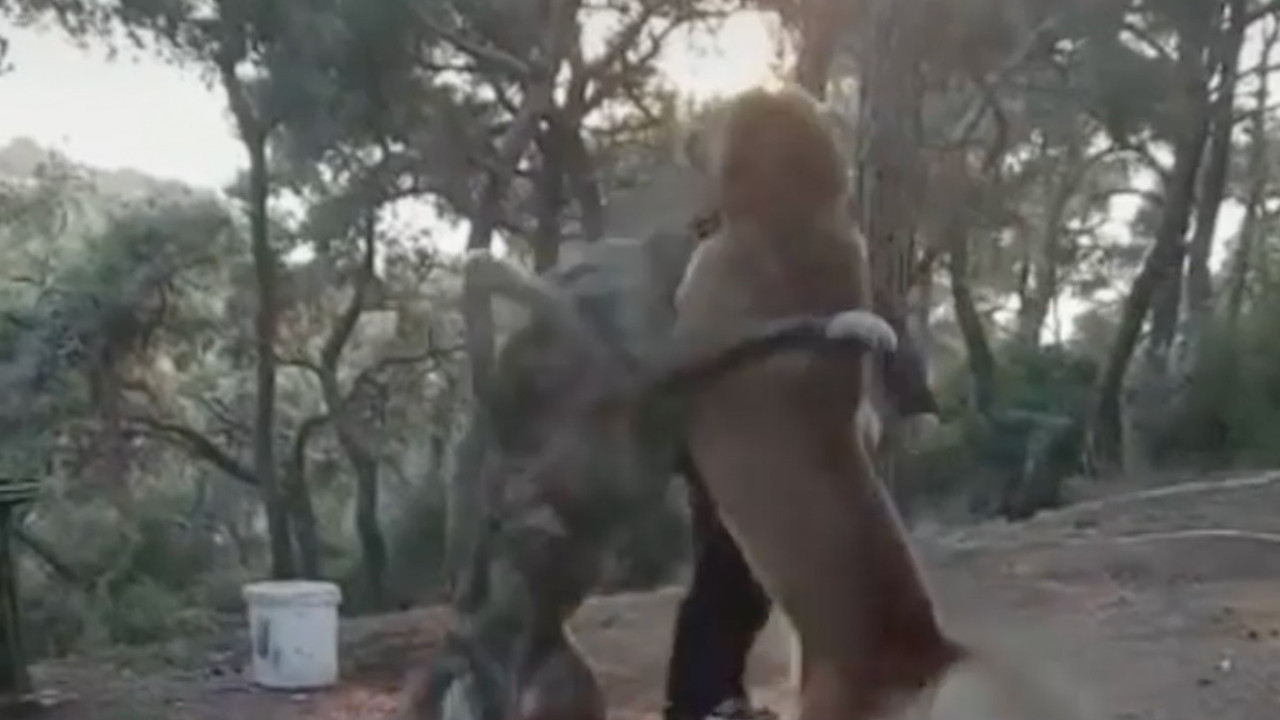 Investigation launched into dog fighting ring on Istanbul’s Büyükada
Investigation launched into dog fighting ring on Istanbul’s Büyükada Dog named 'Wafer' spearheads the animal adoption movement in Turkey
Dog named 'Wafer' spearheads the animal adoption movement in Turkey Turkish municipality buries stray dogs alive after sedating them
Turkish municipality buries stray dogs alive after sedating them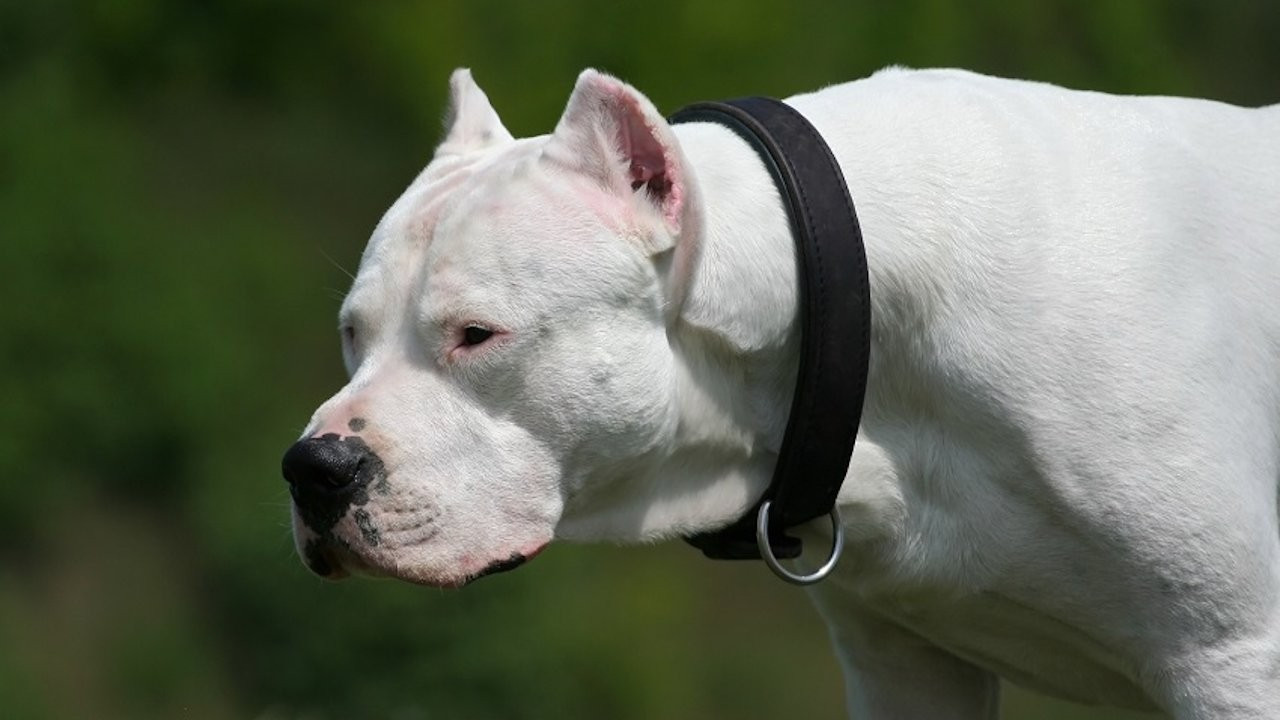 Turkey to ban four dog breeds as part of animal rights law
Turkey to ban four dog breeds as part of animal rights law